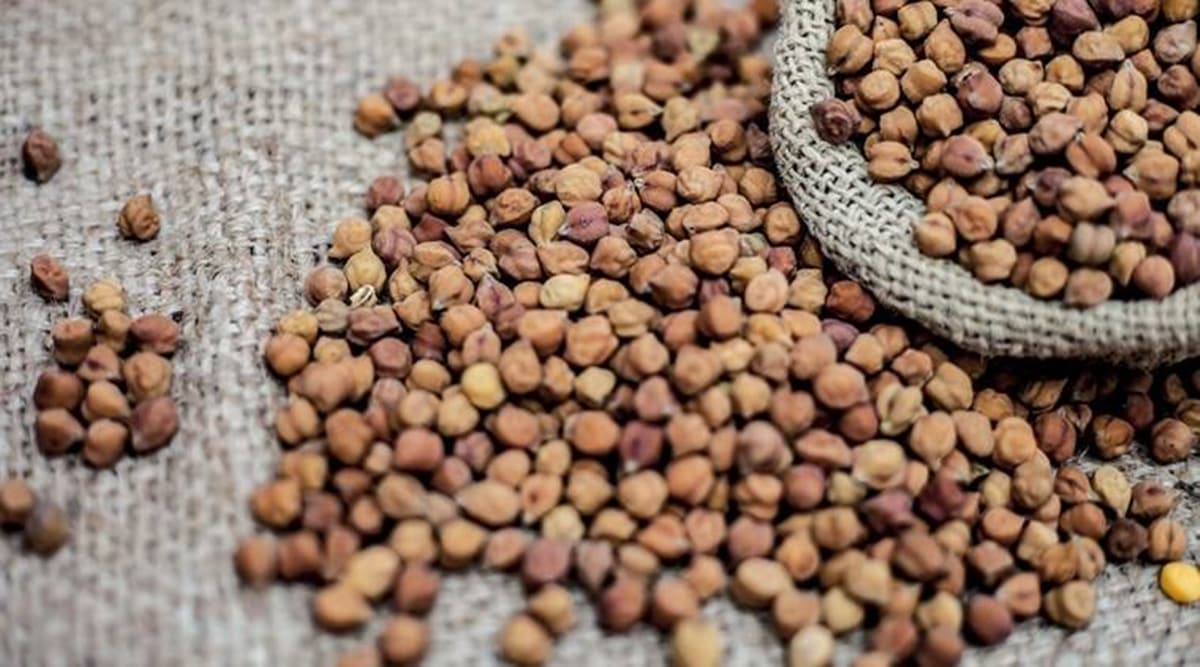 Last season, National Cooperative Agricultural Marketing Federation (NAFED) effected procurement of record levels of chana under the Price Support Scheme. (Representational/File)
Last season, National Cooperative Agricultural Marketing Federation (NAFED) effected procurement of record levels of chana under the Price Support Scheme. (Representational/File)VIRENDRA SINGH Songara has decided to wean away from the traditional chana crop this rabi season on his 3 acres of holding in the village of Kandariya in Madhya Pradesh’s Ujjain. Instead, the 30-year-old instead has taken wheat (1 acre) garlic (1 acre), and flowers such as chrysanthemum over the rest of his holding.
“Price prospects of chana are bleak so it is better to go for wheat,” said Songara who is also the director of the Samradha Farmer Producers Company in the area.Songara is one of the many farmers in the traditional chana belt of Madhya Pradesh who have decided to go for wheat or mustard instead. Chana or Bengal Gram is a staple rabi crop for farmers who generally take soyabean during the kharif season. Lower input and moisture are the main reasons for them to go for chana with wholesale markets of Indore, Badnagar, Ujjain, and Dewas being the main centres of trade for farmers.
One of the main reasons Songara cites about his decision is the lack of any clear price indicator for the crop once they harvest it post-March.
This, he and other chana growers of Madhya Pradesh say, is due to the ban on trade of chana on the future platform of the National Commodity and Derivative Exchange (NCDEX). “Even as we sowed, we could get an idea about the future’s price, thanks to the platform. Depending on the price trend, we used to decide on our acreage – now we have no indicators to guide us,” he said.
Last year on December 21, market regulator Securities and Exchange Board of India (SEBI) decided to ban contracts of chana, mustard, soyabean and its derivatives, mustard seed and its derivatives, paddy, wheat and palm oil for a year. Even as farmers hope for an early end to the ban, this year chana has felt the blow as farmers decided to skip the crop. “How can we go for a crop whose price prospects are grim,” is the question that farmers ask.
At Ujjain’s wholesale market, chana for the whole year traded between Rs 4,300-4,500/quintal – much below its government declared Minimum Support Price (MSP) of Rs 5,230/quintal. Traders and dal millers had ruled out any immediate change in chana prices. Harsha Rai, vice president of the Indore-based commodities firm Mayur Corporation said farmers would prefer wheat and mustard over chana this year. “We see this trend in Madhya Pradesh and Rajasthan and this is due to better prices,” she said.
As of November 18, India has reported 52.53 lakh hectares of chana acreage which is more or less the same as that of last year’s 52.87 lakh hectares.
Last season, National Cooperative Agricultural Marketing Federation (NAFED) effected procurement of record levels of chana under the Price Support Scheme.
Under this scheme, farmers are allowed to sell a portion of their produce at the government declared MSP. As per official data, NAFED still has around 25 lakh tonnes of chana of which 10 lakh tonnes would be maintained as buffer stock. The organisation has started liquidating its stock at prices below its procurement price. Traders both in Madhya Pradesh and other states said at this stage prices are unlikely to see any remarkable change in the days to come.
“Of course if NAFED decides to hold its stock, the picture can change drastically as private millers or stockists do not have any stock,” said Rai.